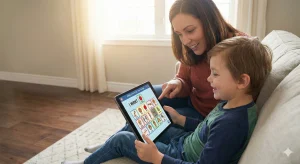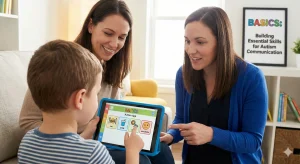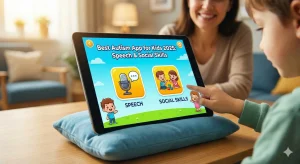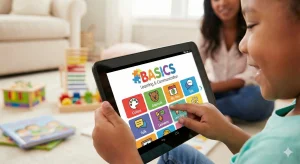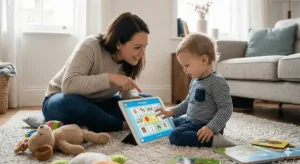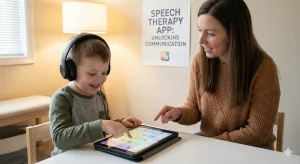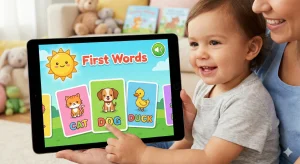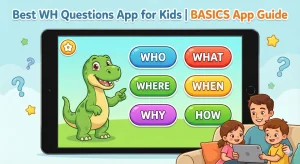10 Fun Occupational Therapy Activities Kids Actually Enjoy
By Wellness Hub
Last Updated: September 17, 2024
Occupational therapy plays a vital role in helping children develop the skills they need for everyday activities, from dressing themselves to participating in school and play. But here’s the thing: therapy doesn’t have to feel like a chore. When therapy sessions are infused with fun and engaging activities, children are not just learning—they’re having a blast while doing so. This approach not only keeps them motivated but also makes therapy a positive experience that they look forward to.
Engaging kids in enjoyable activities has numerous benefits beyond skill development. It can boost their confidence, enhance their social skills, and even improve their emotional well-being. Plus, when therapy feels like play, kids are more likely to participate actively and consistently, making the therapeutic process more effective.
Also read: Online Occupational Therapy
1. Sensory Play with Homemade Slime
If your child loves to get hands-on, sensory play with homemade slime can be a fantastic activity. It’s more than just a fun craft—it’s an excellent way to enhance tactile sensory processing and fine motor skills. Playing with slime allows kids to explore different textures, stretch their creativity, and even practice hand movements that can be calming and therapeutic.
How to Make Safe, Non-Toxic Slime at Home: Making slime at home is easier than you might think, and you can control the ingredients to keep it safe for your little ones. Here’s a simple recipe:
- Ingredients: You’ll need 1 cup of washable school glue, 1 teaspoon of baking soda, and 1 tablespoon of contact lens solution (make sure it contains boric acid).
- Instructions: Start by mixing the glue and baking soda in a bowl. Slowly add the contact lens solution while stirring until the mixture forms a slime consistency. If it’s too sticky, add a bit more solution.
- Play Ideas: Kids can stretch, squeeze, and shape the slime. Add beads, glitter, or even small plastic animals for extra sensory input, making the activity even more engaging.
Tips:
- For a softer, more soothing slime, add a few drops of lotion.
- To make it a themed activity, you can color the slime based on seasons or holidays, like orange for Halloween or green for St. Patrick’s Day.
2. Obstacle Course Adventure
Turning your living room or backyard into an obstacle course is an exciting way to get kids moving. This activity helps improve gross motor skills, coordination, and balance—all while having fun. Plus, you can adjust the course to fit the space and your child’s abilities, making it suitable for any age.
Setting Up a Simple Obstacle Course: Use household items like pillows, chairs, and jump ropes to create challenges. For instance:
- Crawl under chairs like a tunnel.
- Jump over pillows lined up like hurdles.
- Balance on a piece of tape placed on the floor as a tightrope.
Tips:
- To add a sensory twist, include activities like crawling through a soft blanket tunnel or balancing on textured surfaces like bubble wrap.
- Adjust the course difficulty based on your child’s age. For younger kids, keep it simple with fewer obstacles; for older children, increase the challenge with more steps or timed runs.
3. Creative Arts and Crafts
Arts and crafts aren’t just about making something pretty—they’re also fantastic for boosting fine motor skills, hand-eye coordination, and creativity. Whether it’s painting, drawing, or working with clay, these activities provide endless opportunities for kids to express themselves and practice their skills.
Simple Craft Ideas to Get Started:
- Painting with Q-tips: Instead of a brush, use Q-tips to make dot paintings. This encourages precision and control.
- Clay Creations: Soft, air-dry clay is perfect for little hands to mold and shape into anything they imagine, from animals to small sculptures.
- Nature Collages: Collect leaves, flowers, and small sticks from outside, then glue them onto paper to create beautiful nature scenes.
Tips:
- Use a variety of materials—watercolors, markers, and different types of paper—to keep things interesting.
- Let kids take the lead in deciding what to create. This not only makes the activity more enjoyable but also empowers them to make choices and express their unique ideas.
4. Animal Walks
Animal walks are a fun and energetic way for kids to strengthen their bodies and improve coordination. They not only help in building core strength and body awareness but also bring a sense of playfulness to therapy that kids absolutely love. The idea is simple: mimic the movements of different animals, and you’ve got yourself a fun, engaging exercise!
How to Perform Animal Walks:
- Crab Walk: Sit on the floor with hands and feet on the ground, lift your hips, and walk backward like a crab. This movement strengthens the arms, legs, and core muscles.
- Bear Crawl: Start on all fours, lift the knees off the ground, and walk forward using hands and feet. This is excellent for coordination and works out the whole body.
- Frog Jumps: Squat down like a frog and jump forward with both feet. This helps improve leg strength and balance.
Tips:
- Make it a game! Encourage your child to make animal sounds while walking or create a short story where they’re the animals exploring the jungle. Not only does this add fun, but it also stimulates their imagination.
- Challenge your child by timing how long they can keep up the animal walks or by setting up a “safari” obstacle course that includes different animal movements.
5. Cooking and Baking Together
Cooking and baking can be much more than just preparing food—it’s a wonderful way to help kids develop fine motor skills, follow instructions, and experience different sensory inputs. From stirring batter to decorating cookies, each step involves skills that are crucial for their development.
Easy, Child-Friendly Recipes:
- Fruit Kabobs: Let kids assemble colorful fruit kabobs by threading chunks of fruit onto skewers. This is a simple task that enhances hand-eye coordination.
- Mini Pizzas: Use English muffins as the base and let kids spread the sauce, sprinkle cheese, and add their favorite toppings. It’s a great way to work on spreading and fine motor skills.
- Decorating Cupcakes: Kids love this! Provide different toppings like sprinkles, chocolate chips, and small fruits, and let them decorate to their heart’s content.
Tips:
- Turn cooking into a learning moment by encouraging kids to measure ingredients. It’s a practical way to sneak in some math while keeping them engaged.
- Keep the environment safe and let them take charge of age-appropriate tasks, like mixing or spreading. This boosts their confidence and gives them a sense of achievement.
6. Sensory Bins Exploration
Sensory bins are one of the most versatile and engaging tools in occupational therapy. They help kids explore different textures, improve fine motor skills, and spark their creativity through imaginative play. Sensory bins are easy to set up and can be customized to fit a variety of themes and interests.
How to Create a Sensory Bin:
- Materials Needed: A shallow plastic bin, a base filler (like rice, beans, sand, or water beads), and small items related to a theme (like toy dinosaurs for a prehistoric theme or seashells for an ocean theme).
- Setup: Fill the bin with your base material, then add items that encourage digging, scooping, and exploring. Provide tools like small cups, scoops, or spoons to enhance the experience.
Tips:
- Change up the themes regularly to keep it interesting. One week it could be a “construction site” with small trucks and rocks, and the next, an “underwater adventure” with blue water beads and plastic sea creatures.
- Sensory bins can also be a calming activity. If your child feels overwhelmed, playing with the textures can be soothing and help them regain focus.
7. Puzzle Time
Puzzles are more than just a quiet time activity; they are a fantastic tool for improving problem-solving skills, hand-eye coordination, and patience. From jigsaw puzzles to shape sorters and logic puzzles, there’s something suitable for every age and ability level. The great thing about puzzles is that they encourage kids to think critically and persevere, making them an ideal addition to any occupational therapy activities.
Types of Puzzles for Different Age Groups:
- For Toddlers: Start with large, simple puzzles with big pieces, like wooden shape sorters or puzzles with large knobs. These help with fine motor skills and shape recognition.
- For Preschoolers: Simple jigsaw puzzles with fewer pieces or matching puzzles can challenge their problem-solving skills while keeping it fun.
- For Older Kids: Look for more complex puzzles with smaller pieces, 3D puzzles, or even logic puzzles like Sudoku for kids.
Tips:
- Start with simpler puzzles and gradually increase the complexity as your child’s skills improve. This way, they feel a sense of accomplishment without becoming frustrated.
- Make puzzle time interactive by working alongside your child. You can ask questions like, “Where do you think this piece might fit?” to guide them without giving away the answers.
8. Bubble Play
Bubble play might seem simple, but it offers numerous benefits for children’s development. Activities involving bubbles enhance visual tracking, breath control, and motor skills. Plus, kids love the magic of bubbles, making it an effortless way to sneak in some therapeutic fun!
Fun Bubble Activities:
- Blowing Bubbles: Teach kids to blow bubbles using different tools like bubble wands or straws. This helps with breath control and is especially beneficial for speech therapy.
- Popping Bubbles: Encourage children to pop bubbles using different body parts, like their fingers, toes, or even elbows. This engages their gross motor skills and improves coordination.
- Chasing Bubbles: Let kids chase bubbles around the yard or living room. It’s a great way to get them moving, practicing their agility and balance.
Tips:
- Experiment with different bubble solutions and wands to change up the experience. For example, use a small hoop for large bubbles or a straw for tiny ones.
- Bubble play can also be calming. If your child needs to relax, slow down the pace and have them focus on gently blowing and watching the bubbles float.
9. Therapy Ball Exercises
Therapy ball exercises are a versatile way to improve core strength, balance, and sensory processing. Whether your child is bouncing, rolling, or balancing on a therapy ball, these activities can be both fun and beneficial for their physical development.
Simple Therapy Ball Exercises:
- Sitting and Bouncing: Have your child sit on a therapy ball and bounce gently. This helps strengthen the core and improve balance.
- Rolling Over the Ball: Let your child lie on their stomach on the ball and roll forward and backward. It’s great for both sensory input and coordination.
- Balance Challenges: Challenge your child to sit still on the ball without touching the ground with their feet. It’s a fun game that also strengthens their core.
Tips:
- Always supervise closely and ensure the exercises are done in a safe, soft space to prevent falls.
- For younger kids or those new to therapy balls, start with gentle, supported exercises and gradually let them explore more movements as they gain confidence.
10. Scavenger Hunt
A scavenger hunt is a dynamic and engaging way to encourage problem-solving, physical activity, and sensory exploration. It’s a versatile activity that can be adapted for any space, making it a perfect fit for indoor or outdoor play.
Creating a Scavenger Hunt:
- Themed Hunts: Choose a theme, like colors, shapes, or specific objects (e.g., finding everything that starts with the letter ‘S’).
- Sensory Elements: Incorporate different senses by adding clues that involve sight, touch, and smell. For example, “Find something that feels soft” or “Find something that smells sweet.”
- Maps and Clues: Older kids might enjoy the added challenge of a treasure map or riddles to solve along the way.
Tips:
- Tailor the scavenger hunt to your child’s interests and age level. Younger kids might prefer a simple “find and bring back” style, while older kids can handle more complex clues and hidden objects.
- Use scavenger hunts as an opportunity to practice following directions, teamwork (if done with siblings or friends), and turn-taking.
Occupational Therapy Activities Benefits Overview
| Activity |
|---|
| Activity | Key Benefits | Tools Needed |
|---|---|---|
| Sensory Play | Enhances tactile sensory processing and fine motor skills, promotes creativity and imagination. | Safe, non-toxic slime ingredients, additional textures like beads or glitter for variety. |
| Obstacle Course | Improves gross motor skills, enhances coordination, balance, and overall physical fitness. | Household items such as pillows, chairs, ropes, and soft objects for safe climbing and crawling. |
| Creative Arts | Boosts fine motor skills, fosters creativity, improves hand-eye coordination, and allows self-expression. | Open space or indoor area, instructions for different animal walks (crab walk, bear crawl). |
| Animal Walks | Promotes core strength, coordination, body awareness, and can improve motor planning skills. | Open space or indoor area, instructions for different animal walks (crab walk, bear crawl). |
| Cooking & Baking | Builds fine motor skills, encourages following instructions, enhances sensory processing, and introduces basic math skills through measuring. | Simple, kid-friendly recipes, basic kitchen tools for mixing, measuring, and decorating. |
| Puzzle Time | Develops problem-solving skills, improves hand-eye coordination, patience, and cognitive skills | Age-appropriate puzzles, ranging from simple shape sorters for toddlers to complex jigsaw puzzles for older kids. |
| Bubble Play | Enhances visual tracking, breath control, motor skills, and provides a calming sensory experience. | Bubble wands, straws, bubble solution, or homemade bubble mix with water and soap. |
| Therapy Ball | Strengthens core muscles, improves balance, provides sensory input, and aids in developing motor control. | Therapy ball of suitable size for the child, open space to ensure safety during exercises. |
| Scavenger Hunt | Encourages problem-solving, boosts physical activity, enhances sensory exploration, and builds cognitive skills through clue-following. | Themed items related to the scavenger hunt, such as toys, household objects, or outdoor elements like leaves or rocks. |
Conclusion
Occupational therapy can be both fun and beneficial when you add a touch of creativity and play. Activities like sensory play, animal walks, cooking, and puzzles are not just enjoyable; they help your child develop important skills in a natural way. When therapy feels like play, kids are more engaged and motivated, making progress feel easy and rewarding. This approach not only supports their growth but also boosts their confidence and independence.
As a parent or caregiver, you can adapt these activities to fit your child’s unique needs and interests. If they love animals, try more animal-themed games. If they enjoy making things, focus on cooking or crafts. The key is to keep it flexible and fun, turning everyday moments into opportunities for learning and development. Remember, every small effort makes a big difference. For more ideas and support, check out Wellness Hub, where we’re here to help you make therapy a positive and meaningful part of your child’s life.
Frequently Asked Questions:
1. What are some fun occupational therapy activities for kids?
Fun occupational therapy activities for kids include sensory play with homemade slime, animal walks, cooking and baking, playing with puzzles, bubble play, therapy ball exercises, and scavenger hunts. These activities help improve skills like coordination, balance, fine motor skills, and problem-solving in a playful way.
2. How can I make occupational therapy engaging for my child?
To make occupational therapy activities engaging, incorporate your child’s interests into the activities. For example, if they love animals, try animal walks or themed scavenger hunts. Keep the activities playful and varied, and allow your child to lead the way in choosing what they enjoy most.
3. What are the benefits of sensory play in occupational therapy?
Sensory play helps enhance tactile sensory processing, fine motor skills, and creativity. Activities like playing with slime, exploring sensory bins, or bubble play engage multiple senses, which can improve focus, coordination, and emotional regulation in children.
4. Why are therapy ball exercises good for kids?
Therapy ball exercises are great for strengthening core muscles, improving balance, and providing sensory input. Activities like bouncing, rolling, or balancing on a therapy ball can help kids develop body awareness and coordination in a fun and active way.
5. How do puzzles help in occupational therapy?
Puzzles are excellent for improving problem-solving skills, hand-eye coordination, and patience. They come in various types and difficulties, making them suitable for different age groups and abilities. Starting with simple puzzles and gradually increasing the complexity can keep the activity engaging and challenging.
6. Can cooking be part of occupational therapy for kids?
Yes, cooking is a fantastic occupational therapy activities for kids. It builds fine motor skills, helps with following instructions, and introduces sensory experiences through tasting, smelling, and touching different ingredients. Simple recipes like fruit kabobs, mini pizzas, or decorating cupcakes can be both educational and fun.
7. What are some easy occupational therapy activities I can do at home?
Some easy occupational therapy activities you can do at home include setting up an obstacle course, creating sensory bins, playing with puzzles, engaging in bubble play, and doing animal walks. These activities use common household items and can be tailored to suit your child’s interests and abilities.
8. How can I make a scavenger hunt more beneficial for my child’s therapy?
To make a scavenger hunt more beneficial, incorporate sensory elements and problem-solving clues. Use themes that align with your child’s interests, like a color hunt or nature hunt, and include items that engage multiple senses, such as things to see, touch, and smell.
9. What skills do animal walks improve in children?
Animal walks improve core strength, coordination, and body awareness. Movements like crab walks, bear crawls, and frog jumps engage different muscle groups and can also be turned into fun, imaginative games, making them great for physical development.
10. How often should I incorporate these activities into my child’s routine?
Incorporating these activities into your child’s routine a few times a week can make a significant difference. The frequency can be adjusted based on your child’s needs, interest, and response to the activities. The goal is to keep therapy enjoyable and consistent.
About the Author:
Prapoorna Mangalampalli, Psychologist
M.Sc., M.A., (Dual Masters in Psychology & English) – Counselor (6+ years of experience)
Prapoorna armed with a passionate dedication fueled by dual Master’s degrees in Psychology and English, Prapoorna sheds light on and elevates human experiences. Over 6+ years of experience fuel her insightful approach to counseling, offering profound empathy and guidance across diverse areas like online, marital, relationship, child, family, and career counseling. This dedication to empowering positive change is further underscored by her specialized training in various counseling sectors
Book your Free Consultation Today
Parent/Caregiver Info:
Client’s Details:
* Error Message
